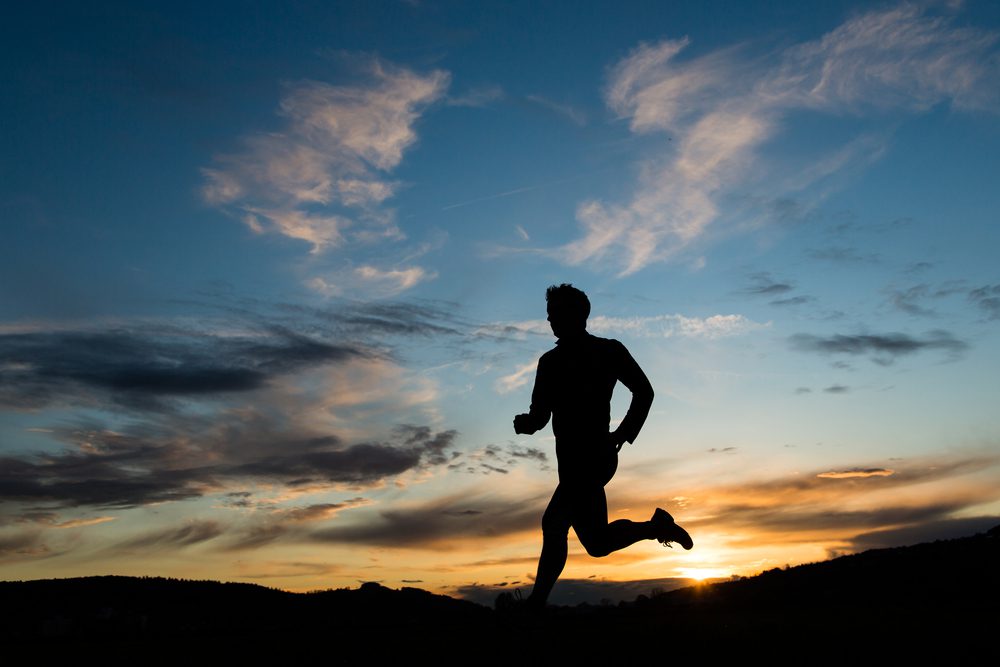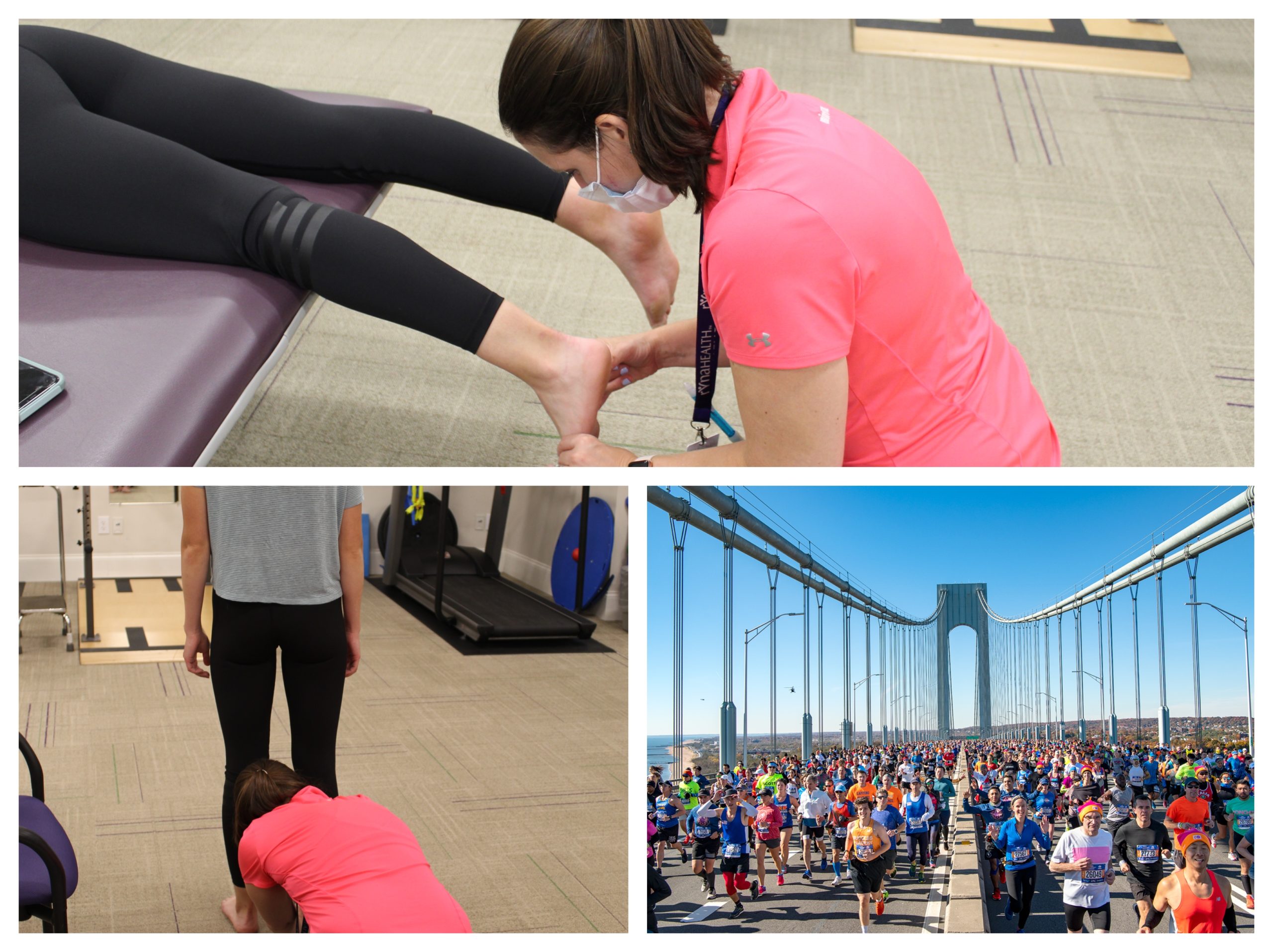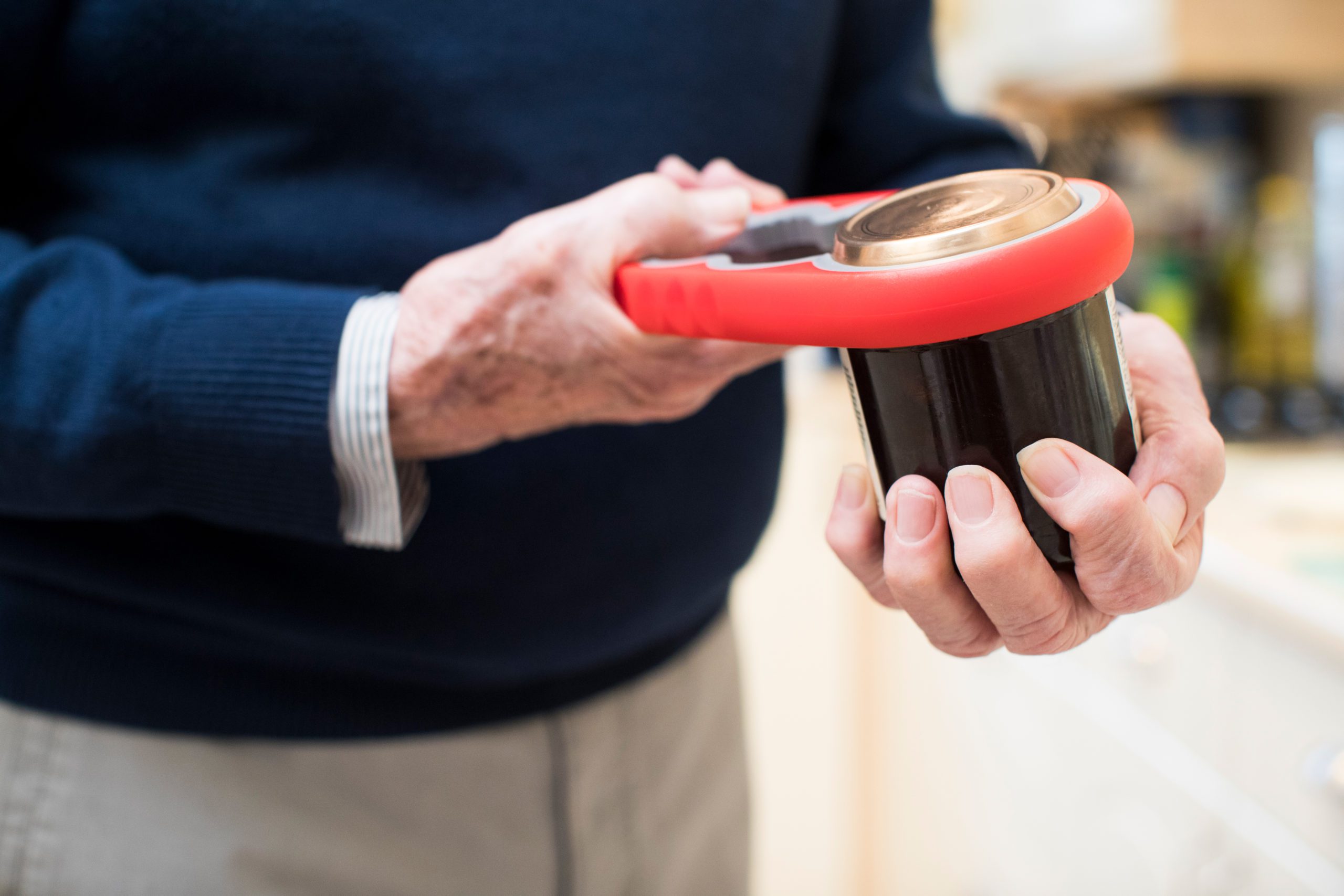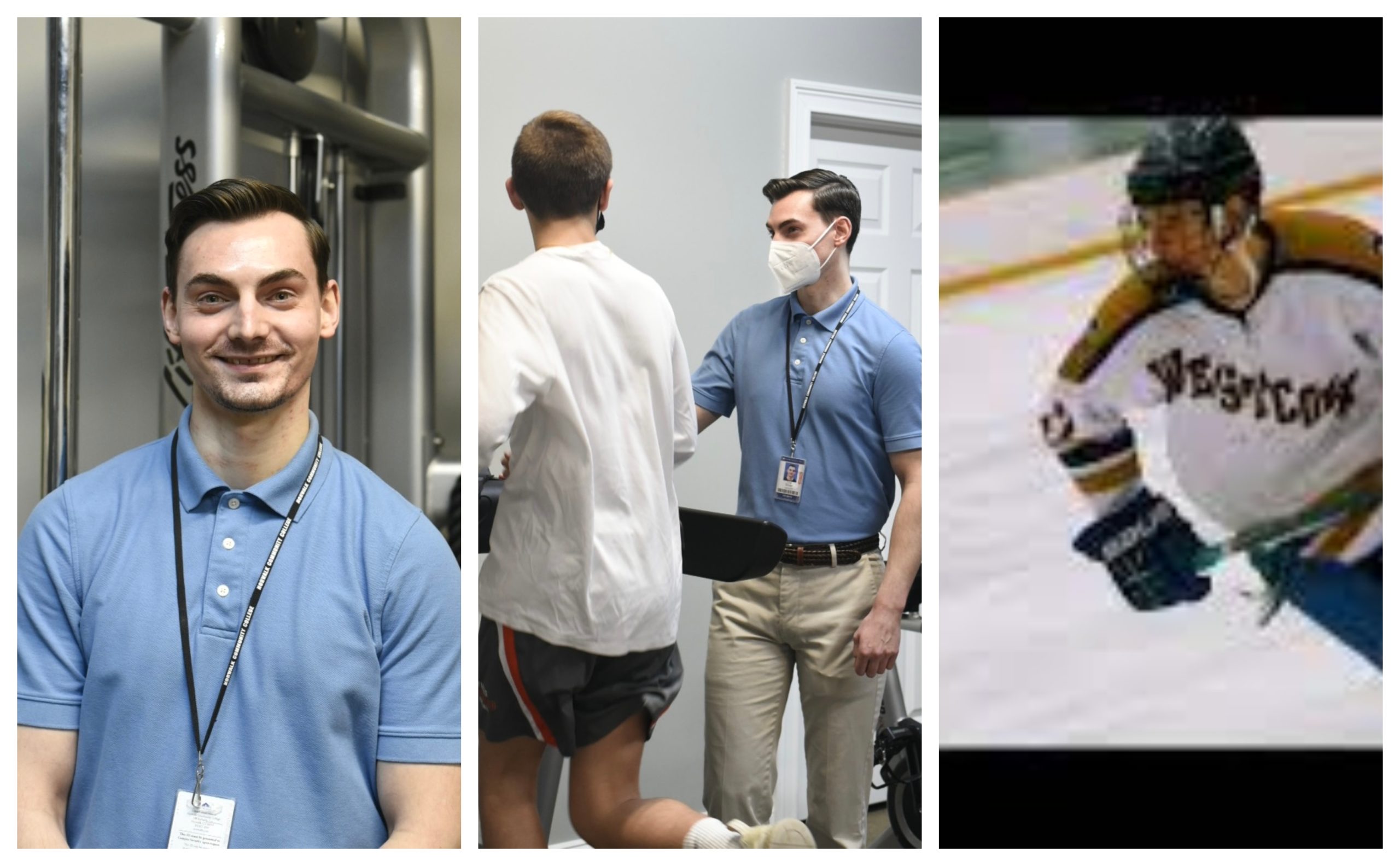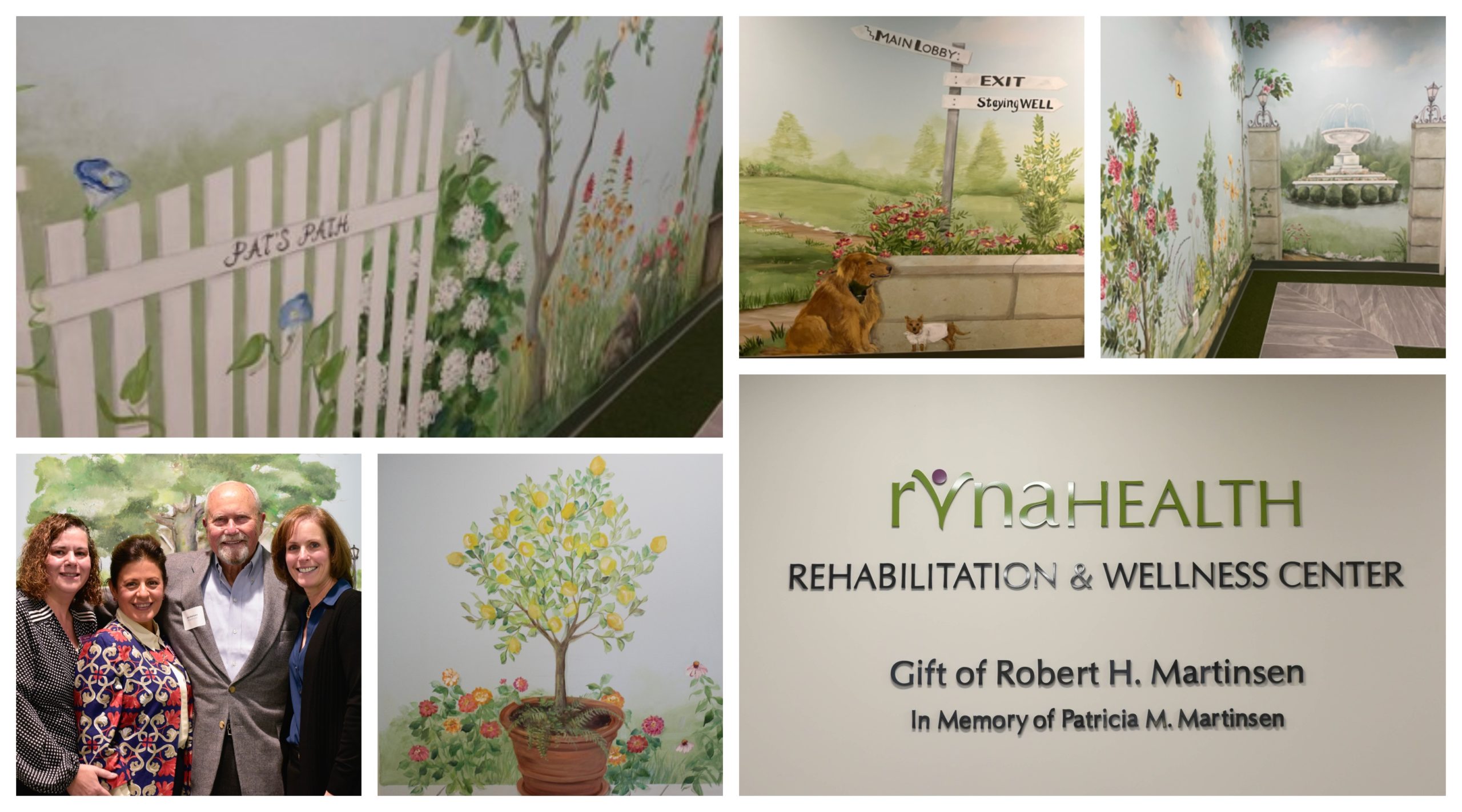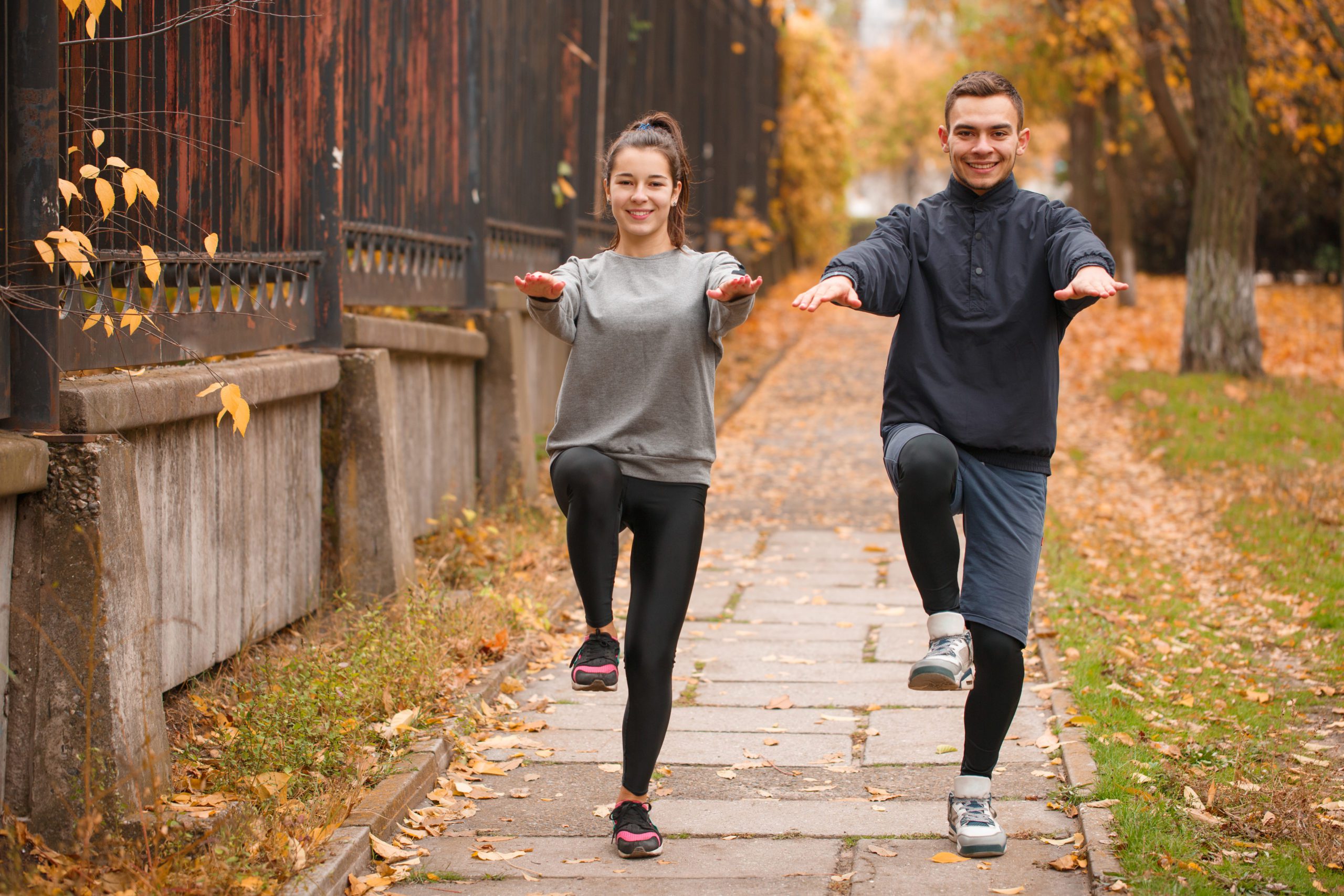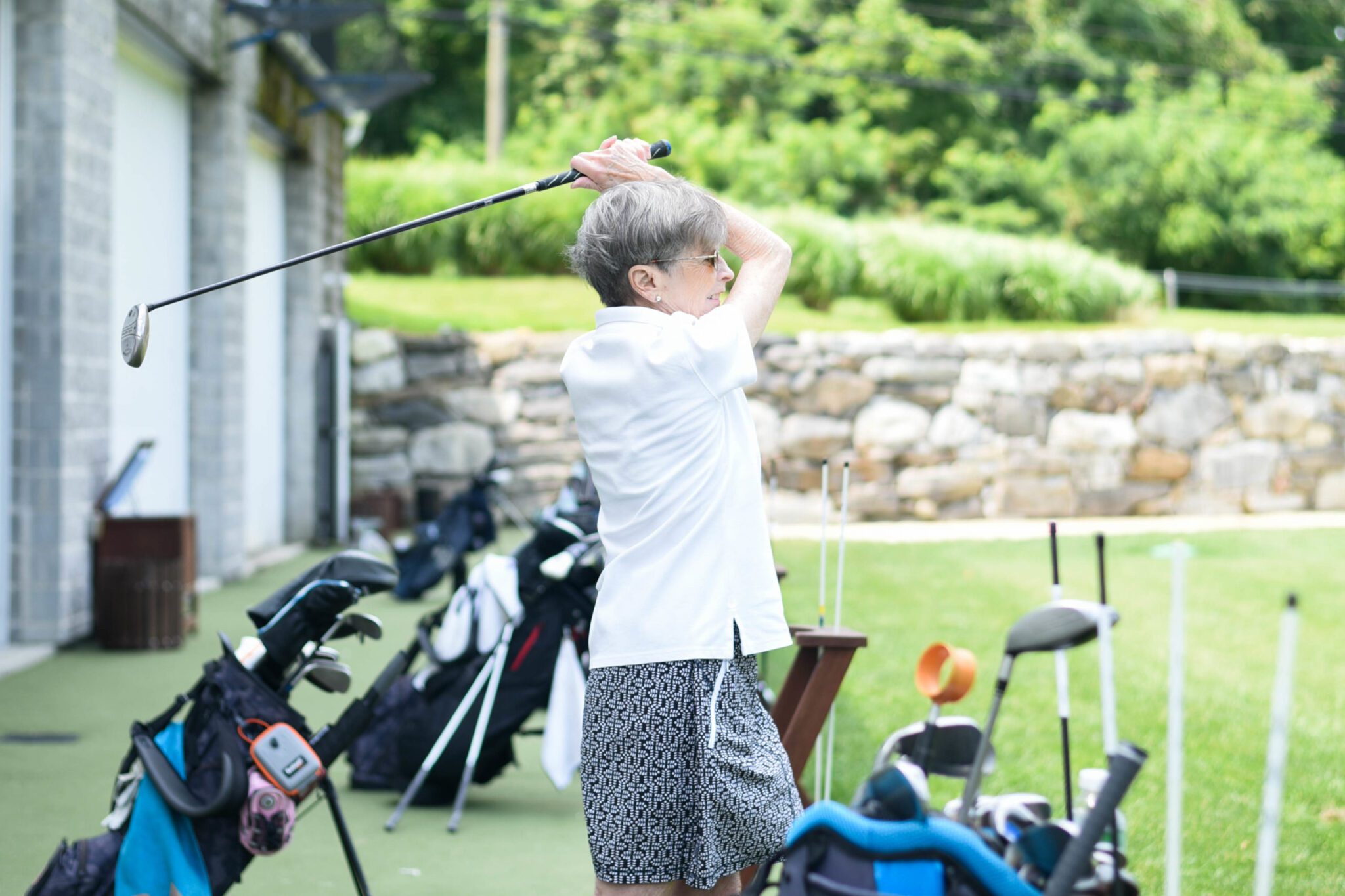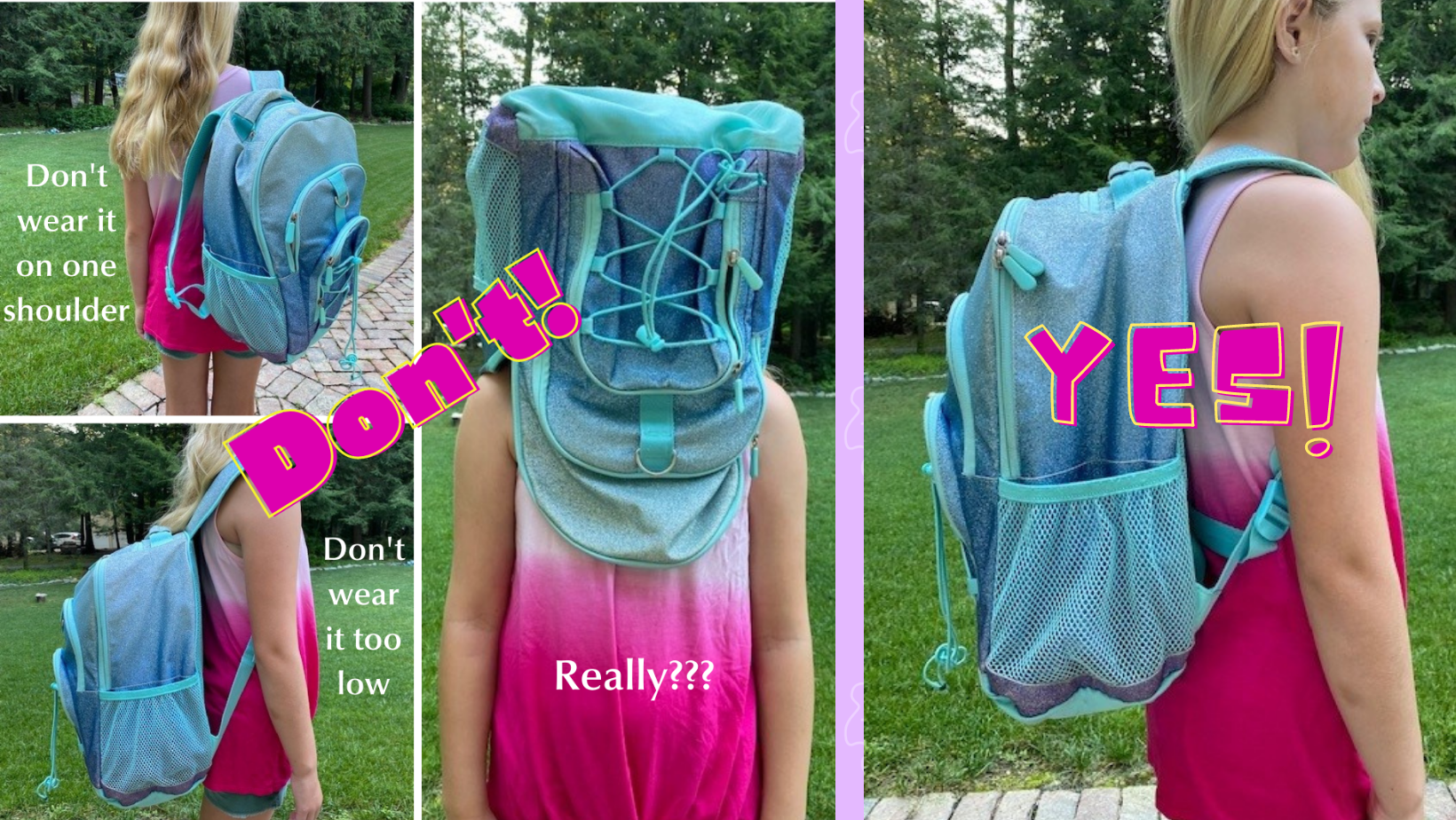An RVNAhealth Running Assessment – Great Gift for Mother’s or Father’s Day!
Occupational Therapy…Where Creativity and Compassionate Care Collide
In celebration of Occupational Therapy Month in April, we are celebrating our 17 in-home and outpatient occupational therapists (OT) at RVNAhealth. We sat down with Gigi Weiss, MSPT, RVNAhealth Director of Rehabilitation Services, to talk about RVNAhealth’s own OT team. “Problem solvers…creative strategists…fitting square pegs in round holes…not cookie cutter…thinking outside the box.” These are just a few of the phrases Weiss uses to describe her occupational therapy team and the work they do. Okay, so these OTs sound like pretty interesting people! So, what exactly do they do and why do they need to be so creative? RVNAhealth has tackled this topic before (check out this great video interview by our very own Danielle Taibi, RVNAhealth Home Health Aide Supervisor, Occupational Therapist MOTR/L, CDP). To summarize, occupational therapists focus on addressing an injury, illness, or post-surgery condition that has disrupted a person’s normal activities of daily life (“ADLs”) – activities as basic as eating, bathing, and dressing, for example. They focus not only on helping to rehabilitate the affected area, but they also place tremendous effort on creative and attainable adaptations to enable a patient to have greater independence and function in those daily activities as they recover.


Given the focus on activities of daily life, OT goals often focus on reclaiming a patient’s ability to complete basic and fine motor skills needed at home…from dressing oneself and using buttons or zippers, to bathing and personal hygiene, to picking up a utensil, cup, or a pen to write with. In focusing on the goal of accomplishing greater independence, a patient may be taught how to accomplish a task (e.g., buttoning a shirt) in an entirely different way, or recommendations may be made for devices to help make such tasks easier.
We were able to capture the unique art of occupational therapy during a recent visit with RVNAhealth patient, Mrs. Monica McMorran of Ridgefield, and her OT therapist, Christine Cooper, OT/L. Cooper was working on a variety of practical activities to assist Mrs. McMorran with improving her strength as well as how to accomplish many activities around the home. From practicing and discussing best approaches for moving in and out of the shower, to practice time in the kitchen working through techniques for cooking and standing safely at the stove, to the basics of how to use tools to assist with putting on socks and sneakers. When asked what she has appreciated most about OT, Mrs. McMorran’s immediate response was, “It’s practical! And it’s about getting on with living!”
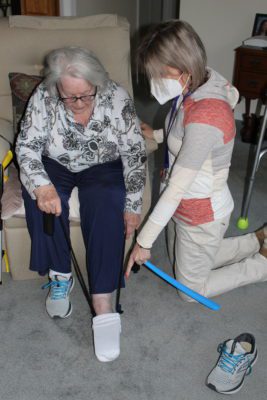

Echoing the experience we witnessed with Mrs. McMorran’s therapy session, “Occupational therapists are masters of adaptive equipment. Devices such as reachers, sock donners, and foam on utensils or pencils are just a sampling of the toolkit an OT may use to help a patient regain independence,” says Kate Campbell, DPT, RVNAhealth Outpatient Practice Manager. “In addition to adaptive equipment, OTs are also experts at home safety modifications and equipment. Focusing on a patient’s environment – e.g., lighting, floor surfaces, bathroom layout — is just as important to regaining independence as focusing on the patient and their abilities.”
“Occupational therapy is often overlooked, especially for outpatient rehabilitation needs” says Gigi Weiss. “Physicians or Orthopedics tend to be more familiar with physical therapy.” As such, she encourages patients to become their own advocate and ask about occupational therapy when seeking rehabilitation – especially when there is a need and desire to regain ability and independence in basic activities of daily life. All OTs at RVNAhealth have achieved masters or doctorate level degrees in their field and are highly recommended. As
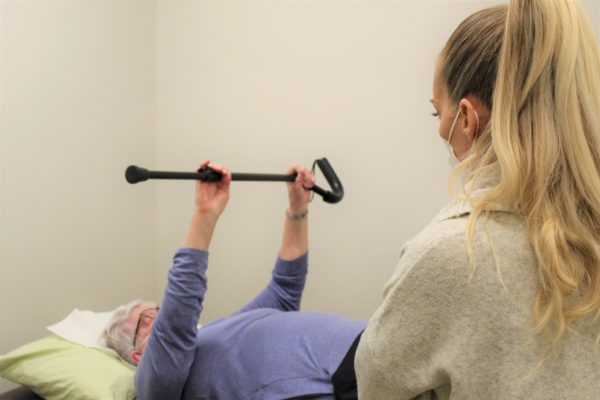

one recent patient added, “[My] expectations for OT were very high, but my therapist EXCEEDED them.” Weiss attributes this success to RVNAhealth’s overall unique rehabilitation program. “We offer both occupational therapy and physical therapy services, in-home and at our outpatient facility in Ridgefield. Finding OTs, working alongside PTs, particularly in the outpatient setting is rare. But this enables RVNAhealth’s ability to evaluate and make recommendations to both patient and physician if we feel someone could benefit, for example, from OT rather than physical therapy.”
For more on RVNAhealth’s occupational therapy and other rehabilitation programs, please visit rvnahealth.org or call 203-438-7862.
Fresh Face in RVNAhealth Rehab
It All Starts with the Feet
And not all feet were created equal. Which is exactly why RVNAhealth is now offering custom and semi-custom orthotics.
The importance of a good foundation has long been established. Be it a skyscraper, a novel, a wedding cake, or an education, it’s that which comes first that provides structure and stability to that which follows.
The human body is no different, with our feet playing a critical role as our foundation. “The fact is,” says Kate Campbell, DPT, Outpatient Practice Manager at RVNAhealth, “the importance of our feet is paramount, yet they are often overlooked — and entirely unappreciated! Each foot is composed of 26 bones, 30 joints, and more than 100 muscles, tendons, and ligaments. From our very first steps, they bear the brunt of every stride and skip, every leap and bound, every stub and twist. Our entire body lies above them, and any imperfection or deformity in the foot invariably impacts the whole body, often manifesting in pain or issues elsewhere.”
Gigi Weiss, MSPT, RVNAhealth Director of Rehabilitation & Wellness continues, “As physical therapists, our goal — our job —is to resolve the pain and issues of our clients and restore them to optimal strength and mobility. Many times, when a client presents with back, hip, or leg pain — and of course, foot pain —the root issue may lie at the foundation, the foot. In these cases, we can only treat their full condition by addressing their feet.”
For this reason, RVNAhealth has added custom and semi-custom orthotics —inserts placed inside the shoes with the purpose of restoring natural foot function and enabling optimal biomechanics — to our Rehabilitation & Wellness service offerings. “Those who already wear orthotics likely understand their value and how they work,” says Campbell. “But for those new to orthotics, we can help you identify if an orthotic is right for you and walk you through the process from start to finish to ensure a successful end result. Believe me, the right orthotic can be life changing.”
Here’s everything you need to know to get started:
Does RVNAhealth offer a particular brand of orthotics?
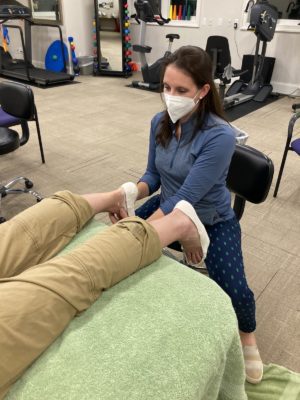

RVNAhealth offers both semi-custom and custom orthotics, correct? What is the difference?
Custom Orthotics are built entirely ‘from scratch’ beginning with an extensive evaluation and measurements, molding of the foot, and then designing the orthotic based on the patient’s specific needs (for example, shoe-type like sneakers vs. loafers, or to accommodate specific pains or conditions like diabetes, etc.). Semi-custom orthotics begin with a ‘prefabricated’ Stride orthotic and are customized from there to meet your specific needs. Stride offers six prefabricated models based on six different foot types.
Who needs orthotics? How do I know if I need them?
Honestly, everybody with foot pain, knee pain, back pain, flat feet, too-high arches, shin splints, plantar fasciitis, neuromas, you name it, might need orthotics. Tendonitis, ankle sprainers, Achilles’ heel, etc. If you are uncertain, we can help you with an evaluation/ consultation.
Why would I get orthotics from RVNAhealth rather than a podiatrist office?


How much do RVNAhealth Stride Orthotics cost?
Custom Orthotics cost $450 and semi-custom orthotics cost $150. Both include evaluation, casting, and follow-up fitting until we know they are right. Re-orders of the same orthotics (for multiple pairs of shoe types) do not require an additional evaluation, hence are significantly reduced. (Actual cost depends on type of orthotic, shoe, etc.)
How long do Orthotics last?
Custom orthotics last for several years if you take care of them or “refurbish” them every year or two. Refurbishment means the orthotic liner is temporarily removed, the orthotic is ‘plumped back up’ and returned to its original shape. Refurbishment is sort of like a tune-up for your car. Semi-custom orthotics ($150) do not get re-furbished. They are replaced every year or two, depending on wear. Semi-custom orthotics are good for kids whose feet grow, and first-time orthotics wearers.
Does RVNAhealth accept insurance for orthotics?
No. Some HSAs and Flexible Spending Accounts, however, do reimburse for orthotics.
How long from my casting appointment until I receive my orthotics?
About 4 weeks.
What if they don’t work?
Getting used to your orthotics takes time and we recommend a staggered wearing sequence for the first few weeks once you start your orthotics. If something still isn’t right after two weeks, it needs to be looked at. We have 90 days to get it right and work with the lab to correct.
Might my child need orthotics?
If your feet are problematic, your children will likely have the same issues. Orthotics are also appropriate for children with Osgood-Schlatter disease; patella tendonitis; flat feet; toe walking; in-toeing; knock knees, and many other issues. If you have concerns, call us at 203-438-7862 and we can work together to figure it out.
Volunteer Spotlight – ‘Meet the Anns!’
RVNAhealth Unveils Pat’s Path
Balance Matters!
Balance is an important part of optimal health, particularly as we age — meaning as we advance past the age of 30. (Yes, 30!) And not just equalizing work/life obligations, but physical body balance. Balance is the state of equilibrium when all forces are aligned resulting in optimal posture, muscle control, and spatial orientation. Much like with lifestyle balance, if our bodies are not properly aligned, undesirable consequences are the result. With normal aging, or following injury, surgery, or any physical stressor, improper balance can result in falls, muscle/strength weakening, and decreased mobility.
Maintaining healthy balance is not difficult and can improve overall movement, enhance joint mobility, and reduce injury risk. According to the Centers for Disease Control, the muscles that keep us upright begin to weaken in our 30s and falls are a leading cause of injury or death in people over age 65. One in three in this age group experience a debilitating fall each year.
Oftentimes, people don’t recognize when their coordination is compromised and the RVNAhealth Rehabilitation & Wellness Center team offers tips for maintaining optimal balance health at every age:
Strengthen core muscles. It doesn’t take a crunch class at the gym to increase core strength (though don’t let us stop you!). Some simple ways to engage core muscles include planks and push-ups (try doing them on the counter if the traditional floor versions are too much. Add an arm lift to the plank if you’re able.
Improve your static balance (your ability to hold our body in a specific position and posture) by standing on one leg. On a flat, stable surface, like while at the sink or on the phone, lift one leg off the floor – even a few inches. Then repeat with the other leg. Do whatever it takes to hold for 30 seconds. Always repeat this exercise more than once. The first time simply wakes up the nervous system, but the second or third round really reiterates the learning and engrains the new pattern.
Walk heel to toe twenty steps forward and twenty steps back to the starting position. This works on your dynamic balance. Use arms for stabilization, as needed. Then walk on your tippy toes, walk on your heels, walk sideways, and walk BACKWARDS! With caution, please!
Incorporate quality rest. A good night’s sleep improves equilibrium; sleep deprivation can slow the body’s ability to respond, increasing fall and injury risk.
Do Yoga. Regardless of fitness level, yoga is a safe way to improve strength, lengthen muscles, and reduce stress, all which can impact body balance.
Stay hydrated! The Vestibular system in the inner ear relies on a good fluid balance. Being dehydrated can lead to slower reflexes in response to a fall.
Give the brain a good workout. Yes, the brain plays an important role in body balance because it processes signals from the sensory body systems to aid in movement and balance. Keeping the brain engaged through reading, word/numeric puzzles, other mind-challenging hobbies, listening to music, or trying a new skill can strengthen brain performance which positively affects balance.
If your balance is a concern, contact the RVNAhealth Rehabilitation & Wellness Center at (203) 438-7862 to schedule an evaluation, or attend an upcoming Falls Assessments & Balance Testing program.
Gen Fagan is Back in Action!
Back to Backpacks
It’s almost the time of year when green leaves turn fiery, and days get shorter. Soon the roads will be peppered with the surest sign of summer’s end: school buses. As students prepare to re-enter the classroom — some for the first time in a long time — and families shop for back-to-school supplies, the RVNAhealth Rehabilitation and Wellness Center has tips on how to help kids avoid discomfort and potential injury by considering an oft-overlooked culprit: the backpack.
The American Academy of Pediatrics advises that kids’ full backpack weight should fall between 10-20% of total body weight and one study revealed that the average high schooler’s backpack weighed in at nearly 19lbs. That’s a lot of weight for young people to carry around. Sarah Triano, OTR/L, RVNAhealth Occupational Therapist, shared the following tips to prevent backpack injuries:
Buy the Right Size
The backpack should not exceed the length of a child’s back. If it falls more than 3” below the child’s waist with the straps secured comfortably, it is too large
Consider the Straps
Straps should fit snugly around the shoulders without a large gap; Both straps should be used to balance the weight evenly across the back and chest; and thicker straps are preferable to thin which can cause circulation problems and extremity tingling/numbness
Lift With the Legs
When picking up the backpack up from the floor, bend at the knees and avoid bending at the waist which stresses back, shoulder, and neck muscles
“Wearing a backpack inappropriately won’t necessarily have an impact straight away,” says Triano, “but it will lead to a build-up of postural strain that may result in injury weeks, months, or even years down the road. That’s why proper usage, plus keeping the weight to a minimum, is important.”
Should injury develop, Triano recommends early intervention as the best course of action. “Without proper treatment, a small strain can quickly become a more complicated situation.” she notes.
For more information, or to schedule an appointment with an RVNAhealth Rehabilitation therapist, call (203) 438-7862 or visit https://rvnahealth.org/services/get-well/rehabilitation-center/
And now for all you history buffs — the origin of the current-day backpack:
A marriage proposal is largely responsible for the modern-day nylon, double-strap, zipped accessory seen at bus stops around the country. Murray Pletz and Skip Yowell, cofounders of a 1960’s, Seattle-based, outdoor gear company, re-developed a pack concept created by Gerry Cunningham of Gerry Outdoors, for a nylon daypack designed for skiers and hikers but neither knew how to sew. Pletz’s girlfriend, Jan Lewis, an unemployed teacher, owned a sewing machine and Pletz offered her more than a partnership in the company if she came onboard. If she accepted Pletz’s marriage proposal, the company would bear her name. In 1969, JanSport was born. Over the next two decades companies like LL Bean joined the competition and by the late 1980s nearly every kid in America sported a backpack for schoolbooks and supplies.
While we’re on the topic of school, read up on Back to School Fuel and how to keep those daily lunches healthy — and interesting.

